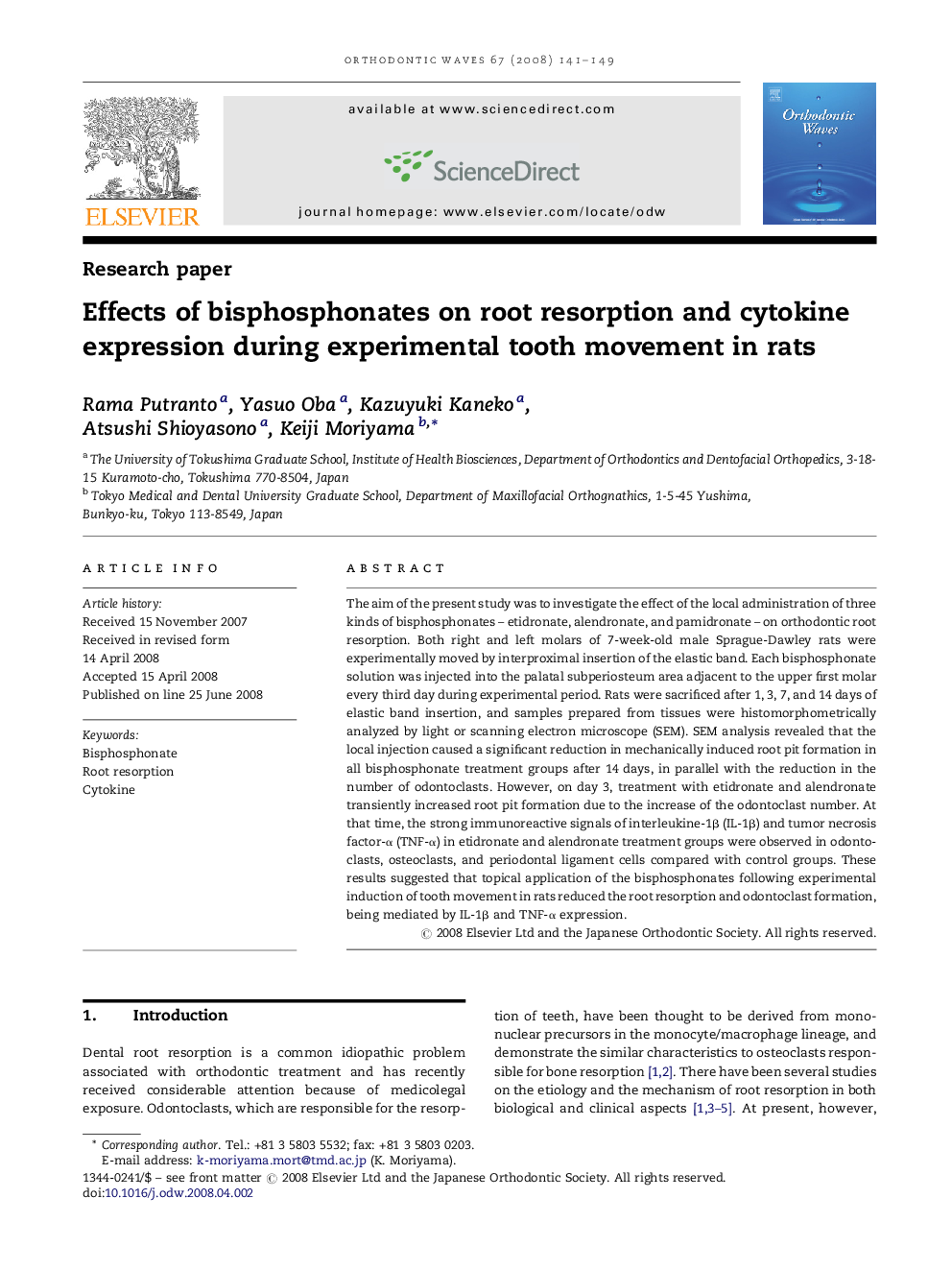| Article ID | Journal | Published Year | Pages | File Type |
|---|---|---|---|---|
| 3170646 | Orthodontic Waves | 2008 | 9 Pages |
The aim of the present study was to investigate the effect of the local administration of three kinds of bisphosphonates – etidronate, alendronate, and pamidronate – on orthodontic root resorption. Both right and left molars of 7-week-old male Sprague-Dawley rats were experimentally moved by interproximal insertion of the elastic band. Each bisphosphonate solution was injected into the palatal subperiosteum area adjacent to the upper first molar every third day during experimental period. Rats were sacrificed after 1, 3, 7, and 14 days of elastic band insertion, and samples prepared from tissues were histomorphometrically analyzed by light or scanning electron microscope (SEM). SEM analysis revealed that the local injection caused a significant reduction in mechanically induced root pit formation in all bisphosphonate treatment groups after 14 days, in parallel with the reduction in the number of odontoclasts. However, on day 3, treatment with etidronate and alendronate transiently increased root pit formation due to the increase of the odontoclast number. At that time, the strong immunoreactive signals of interleukine-1β (IL-1β) and tumor necrosis factor-α (TNF-α) in etidronate and alendronate treatment groups were observed in odontoclasts, osteoclasts, and periodontal ligament cells compared with control groups. These results suggested that topical application of the bisphosphonates following experimental induction of tooth movement in rats reduced the root resorption and odontoclast formation, being mediated by IL-1β and TNF-α expression.
